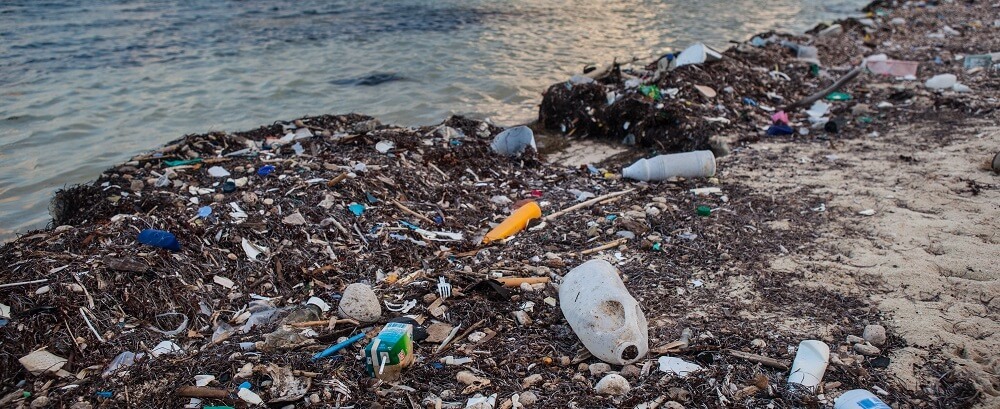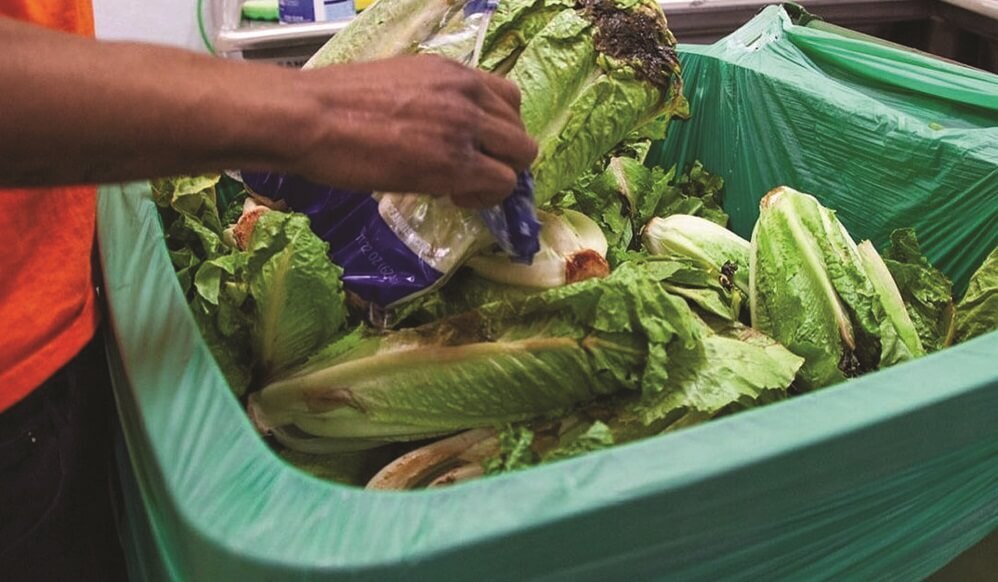In this article, we will explore:
- What is oxo-degradable plastic?
- Why are oxo-degradable plastics bad?
- What are the environmental impacts of oxo-degradable plastics?
- What are some alternatives to oxo-degradable plastics?
What is oxo-degradable plastic?
Oxo-degradable plastic is a type of plastic that is made to break down into smaller pieces when exposed to elements like oxygen and sunlight. This process, known as oxidation, accelerates the breakdown of the plastic.
How does oxo-degradable plastic break down?
The rapid breakdown process of oxo plastic is caused by its additives. When oxo-degradable plastic is made, metal salts are added. These salts, which include transition metals like nickel and iron, are the first to decompose once the plastic is exposed to sunlight and oxygen. This process takes as little as 12 months.
How is Oxo-Degradable Plastic Different from Traditional Plastic?
Traditional plastic, which is made from petroleum-based materials, does not break down easily. This means that plastic waste can take hundreds of years to decompose, leading to a buildup of plastic in landfills and the environment. Oxo-degradable plastic is made to break down faster, potentially decreasing plastic waste in the environment. However, this is not the case.

Why is Oxo-Degradable Plastic bad?
Oxo-degradable plastic companies often market it as "biodegradable" or "compostable", which is one of its main issues. However, these terms are greenwashing as the plastic never fully biodegrades. Microorganisms do not recognize the synthetic monomers, so they do not digest them. Instead, oxo plastic breaks down into smaller pieces of plastic, called microplastics.
Currently, there are no set rules for making oxo-degradable plastic. This means that each company can use different methods and materials to create their own version of this plastic. This lack of standardization makes it difficult to determine the true environmental impact of oxo-degradable plastic.
Are oxo-degradable plastics banned?
In 2018, the European Union called for a restriction of oxo-degradable plastic due to the murky claims of their environmental benefits. This led to complete bans in France, Spain, and among the EU Single Use Plastic Directive.
The United States Federal Trade Commission sent out over 15 cease and desist letters to fight against companies that were falsely claiming oxo-degradable plastic to be biodegradable. More recently, large companies like Nestle, Unilever, and PepsiCo have initiated total bans on the use of oxo plastic.
What are the Environmental Impacts of Oxo-Degradable Plastic?
Oxo-degradable plastic has additives that speed up its breakdown when exposed to sunlight or heat. Although it may seem good at first, there are worries about how it will affect the environment.
Landfill Buildup
Despite its ability to break down more quickly than traditional plastic, oxo-degradable plastic still ends up in landfills because unfortunately it is not recyclable. Oxo-degradable plastic needs sunlight or heat to break down and degrade properly which it will not receive in a landfill setting.
Landfills are often anaerobic (lacking oxygen), especially in deeper layers where waste is compacted and covered. Without sufficient oxygen, the oxidation process is significantly slowed down or halted, preventing the oxo-degradable plastics from breaking down as intended. Additionally, oxo-degradable plastics also need UV light to activate the pro-oxidant additives that catalyze the breakdown process. In a landfill, waste is typically buried under layers of other waste and soil, limiting exposure to sunlight and, consequently, UV light. This further inhibits the degradation process.
Landfills also lack the elevated temperatures and microbial activity necessary for the proper breakdown of oxo-degradable plastics. While landfills can generate heat due to the decomposition of organic matter, the temperatures may not be consistent or high enough throughout the entire landfill to effectively promote the degradation of oxo-degradable plastics. Furthermore, the anaerobic conditions in landfills are less favorable for the aerobic microorganisms that would typically break down the plastic fragments.

Pollution
One of the other main concerns with oxo-degradable plastic is that it does not fully biodegrade. Instead, it breaks down into smaller fragments known as microplastics, which remain in the environment for a long time. Microplastics can be ingested by marine animals and wildlife which disrupts their digestion and introduces toxic chemicals to the food chain.
The creation of microplastics contradicts the idea of oxo plastic being degradable as it essentially trades one problem for another. With microplastics being left behind in the breakdown process, this makes oxo-degradable plastics only partially degradable.
Greenhouse Gas Emissions
The production of oxo-degradable plastic still requires the use of fossil fuels, contributing to greenhouse gas emissions. Additionally, the breakdown of this plastic can also release methane, a potent greenhouse gas, into the environment.
What are the Alternatives to Oxo-Degradable Plastic?
Often soft, oxo-degradable plastics are found in "green" dry-cleaning bags, dog waste bags and carrier bags. They're also in certain types of bottles, and other plastic products. The best way to combat oxo-degradable plastic is to opt for alternatives like compostable products made from truly biodegradable materials or reusable options when able.
Bioplastics
PLA, or Polylactic Acid is a type of bio-based plastic that can break down naturally. It is made from rapidly growing renewable resources like corn and sugarcane. PLA is better for the environment than traditional plastics when used in packaging materials like food packaging. It breaks down in a commercial composting environment and is generally certified compostable.
Another plant-based bioplastic is Mater-Bi. Many of the shopping bags, compost liners, and trash bags we carry are made from this material. These bags are incredibly strong, utilize waster-based inks and dyes, and are compostable in 10-40 days in a commercial composting facility.

Other Plant-Based Materials
Other plant-based compostable materials emerge as a promising alternative, offering a greener option for disposable products. These materials break down naturally, contributing nutrients to the soil without the drawbacks of traditional plastics. Some examples include bamboo, sugarcane fiber, cellophane, and PHA.
Reusable Alternatives
The most environmentally friendly option is to reduce the use of common plastic altogether. Consider using reusable alternatives, such as glass or stainless steel containers, cloth shopping bags, and recyclable plastics.
Conclusion
The environmental concerns of oxo plastic are very worrisome. This seemingly “degradable” option is not quite fully degradable after all. Opting for eco-friendly alternatives like compostables is a great way to lessen the single use plastic impact. By working together, we can create a more sustainable future for our planet.



